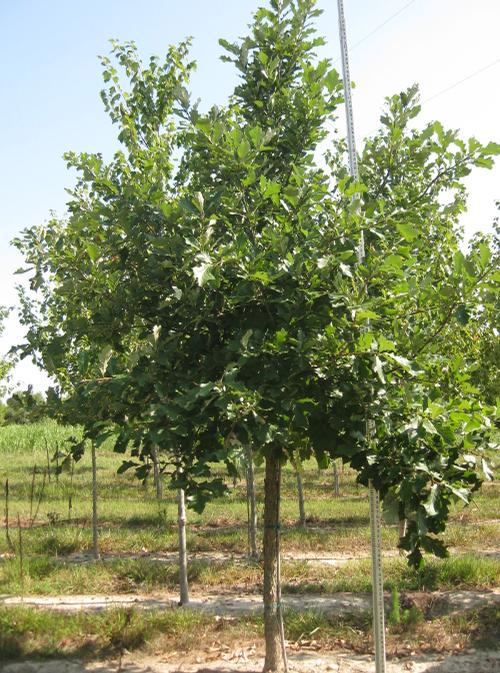

Quercus bicolor
Swamp White Oak
Swamp white oak is a native medium- to large-sized deciduous native tree growing with a broad to oval crown and a short trunk. Young trees have a pyramidal habit. The leaves are glossy, dark green on top and the undersides are silvery white. Fall leaf color is yellow, but sometimes reddish purple. The leaves have rounded shallow lobes with coarse dentate teeth. This tree is also known for its bark which is thick and divided by furrows and ridges.
Acorns are eaten by woodpeckers, wild turkey, other birds, small and larger mammals. Male catkins produce pollen. The trees provide nest sites for birds and pollen for pollinators.
- Round, spreading habit shade tree
- Vibrant fall color
- Grows in wet soils
- Category: Tree, Wetland, Native
- Hardiness Zone: 4-8
- Height: 40-60 ft
- Spread: 50-60 ft
- Foliage Color: Green
Specialty Use
| • | Wildlife Garden |
Critter Resistance
| • | Deer Resistant |
Light Requirement
| • | Sun |
Foliage
| • | Deciduous |
Season of Interest (Foliage)
| • | Fall |
Attributes
| • | Drought Tolerant |
| • | Fall Color |
| • | Focal Point |
| • | Low Maintenance |
| • | Native |
| • | Naturalizing |
| • | Specimen |
| • | Water's Edge / Bog Plant |
Growing & Maintenance Tips for Quercus bicolor
Swamp White Oak grows naturally in low-lying, often swampy areas, bottomland, and along the banks of rivers and streams. It prefers full sun, moist to wet acidic soil with high mineral content, but adapts to drier sites. Due to the root system, it is tolerant of areas that have spring flooding and fairly dry summers. It is tolerant of heat and drought but is sensitive to soil compaction, salt, and air pollution.
